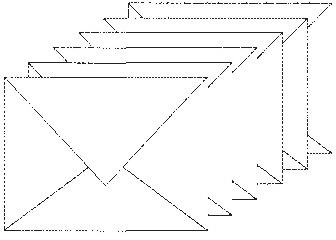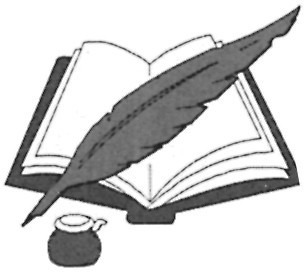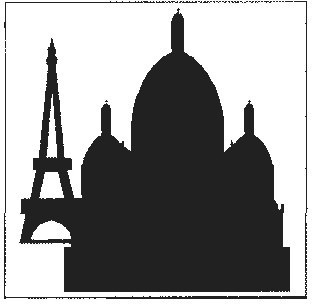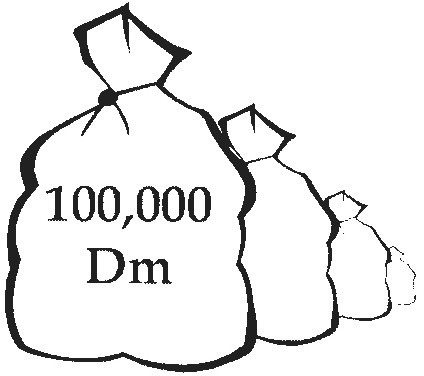
| 13 | A Marvelous Proof Fermat's Last Theorem |
Pierre de Fermat was born in 1601 to a moderately well-to-do French family. He went to law school and eventually became a councillor at the parliament of the French city of Toulouse. Rising through the ranks, he finally became a member of the city's criminal court. As a judge, Fermat had a reputation for having a good mind but being somewhat distracted. He died in 1665 in Castres, a nearby town.
That quick summary of Fermat's public life does not give any hints about why we still remember and talk about him. The reason, of course, is that there was another side to the man. At some point, probably while he was at the university in Bordeaux, he discovered mathematics. That discovery became his lifelong passion.
Like many scholars of his time, Fermat began his mathematical work by studying the works of Greek mathematicians. One of the first things he did was to "restore" one of the books written by the great geometer Apollonius. A partial record of the contents of this book had survived (mostly a list of results without proofs), and Fermat worked through it, filling in gaps and providing full proofs. Inspired by Greek geometry, he developed several important new ideas. For example, in order to solve certain geometric problems, he invented a method of describing curves by equations, a form of coordinate geometry. (See Sketch 16.) He also developed methods for finding maxima, minima, and tangents, anticipating some of the ideas that Newton and Leibniz would use when they invented calculus late in the 17th century.
Fermat never published any of this work. Instead, he wrote letters describing it, first to friends and eventually to other mathematicians, too. His work on geometry aroused quite a bit of interest, so he went into considerable detail in his letters. As a result, we understand this part of Fermat's mathematics quite well.

But other mathematical questions also fascinated Fermat. These had to do with whole numbers. Perhaps his interest was initially sparked by the centuries-old search for "perfect numbers" — numbers that equal the sum of their proper divisors. In any case, Fermat soon obtained new and interesting results in number theory. For example, he determined which whole numbers could be written as the sum of two squares.
Somewhere along the line, he came into contact with the work of Diophantus, another mathematician of Ancient Greece. Diophantus is somewhat unique among the Greek mathematicians whose works have been preserved. His book is about solving problems such as:
Find three squares such that the difference between the greatest and the middle has a given ratio to the difference between the middle and the least.
The solutions Diophantus looked for were always fractions (ratios of whole numbers) rather than arbitrary real numbers, and this restriction makes his problems quite difficult. His book includes solutions to all the problems, but no real explanations about how such solutions might be found.
Diophantus had a huge impact on Fermat. "Problems about numbers," as Fermat described them, began appearing in his correspondence. Fermat made one big change: Instead of looking for fractions, he wanted whole number solutions. But the problems were similar:
•Show that no cube can be a sum of two cubes.
•Show that there are infinitely many squares such that if we multiply them by 61 and then add 1, the result is a square.
•Show that every number can be written as the sum of four squares.
•Show that the only whole-number solution of x2 + 4 = y3 is x = 11, y = 5.
These problems are quite hard, and most of Fermat's correspondents were unable to solve them. Most of them did not, in fact, seem very interested in this kind of thing. One of the problems was the "negative" nature of some of these results. Mathematicians were supposed to solve problems, not to show they were unsolvable! Nevertheless, Fermat kept writing letters about these results, trying to generate interest, with little success. As a result, very few details about this work ever got written down.
In 1670, after Fermat's death, his son Samuel decided to publish some of his father's notes. In particular, he discovered that his father had made many marginal notes in his copy of Diophantus. Rather than publishing just the notes, he prepared a whole new edition of Diophantus which incorporated Fermat's notes. That's where the biggest mystery really starts.

One of Diophantus's problems asked that a given square (such as 25) be written as the sum of two squares (such as 16 + 9). Next to this problem, Fermat wrote
In contrast, it is impossible to divide a cube into two cubes, or a fourth power into fourth powers, or in general any power beyond the square into powers of the same degree. I have discovered a marvelous proof of this, but this margin is too narrow to contain it.
In other words, Fermat claimed that the equation x3 + y3 = z3 has no solution in whole numbers, and similarly for all equations xn + yn = zn for every exponent n bigger than 2. And he added that he could prove this. Many people since have wished his book had bigger margins!
In the 18th century, people began to realize how deep and important Fermat's "problems about numbers" really were. The real mover behind all this was Leonhard Euler, who went through Fermat's number theory, put it in order, and found proofs for most of the claims Fermat had made. He even managed to find one (just one!) case in which Fermat had made a mistake.
That statement in the margin, however, was hard to prove. That there are no integer solutions of x4 + y4 = z4 follows from one of the theorems Fermat actually proved: The area of a right triangle whose sides have integer length cannot be a square. Euler managed to find a proof that x3 + y3 = z3 has no solutions. But there he got stuck. As he remarked, the two arguments are so different that they give no hint as to how to find a proof for the case n = 5, much less a general proof. Because this statement was the only one of Fermat's assertions that remained unproved, it eventually became known as "Fermat's Last Theorem." Of course, to actually be a theorem it needed a proof. Fermat said he had found one, but no one else seemed able to discover that "marvelous proof."
Early in the 19th century, people once again got interested in the problem of trying to prove Fermat's claim. Nobody was able to prove the whole thing, but several mathematicians were able to nibble at the edges of the problem. It quickly became clear that it was enough to find a proof for each prime number value of n. One of the most interesting results was due to Sophie Germain.1 Germain's approach to the search for a proof of Fermat's Last Theorem was to split it into two parts. First, one would show that there are no solutions in which the three numbers x, y, and z are not divisible by the exponent n. Then one would attack the "second case,'' in which one of the three numbers is divisible by n. Then Germain proceeded to show the very first result about the problem that had some generality. She showed that if n is prime and 2n + 1 is also prime, then there are no solutions of xn + yn = zn with none of x, y, or z divisible by n. In other words, she showed that the "first case" was true for any prime exponent n that satisfied the additional constraint that 2n + 1 should also be prime.
At that time, it was difficult for a woman to publish her mathematical work. As a result, Germain's theorem first appeared (with due credit) in a book by Adrien-Marie Legendre published in 1808. Legendre, who was then in his late fifties, was well known and respected, and his publication of Germain's work helped establish her reputation.
Germain's theorem is quite powerful. Her ideas eventually led to a proof of the "first case" of Fermat's Last Theorem for all exponents up to 100. In particular, if n = 5. then 2n + 1 = 11, which is prime, so that Germain's theorem is enough to prove the first case of Fermat's Last Theorem for n = 5. In 1825, Lejeune Dirichlet, then only in his 20s, presented a partial proof of the second case for n = 5 to the Paris Academy. Soon after, Legendre finished off the proof, showing that he was still a powerful mathematician even though he was over 70 years old. A few years later, Gabriel Lamé found a way to prove the theorem for n = 7. Things seemed to be going well.
Around 1830, Lamé had a brilliant idea. The main difficulty in the equation, he felt, was that on one side there was a sum xn + yn and on the other a product zn. If it were possible to factor xn + yn, the equation would be much easier to handle. Of course, apart from pulling out a factor of x + y, it isn't possible to factor xn + yn... unless one uses complex numbers. So Lamé used a complex number ζ such that ζn = 1 to factor the expression into a product of terms that were combinations of whole numbers and the complex number ζ. Assuming that these new numbers had the same properties as the ordinary whole numbers (specifically, assuming that such expressions could be factored uniquely as products of "prime" expressions), he sketched out a proof of the full theorem.

Lamé presented his proof to the Paris Academy. Joseph Liouville was suspicious. Why should the new numbers behave like the old ones? Knowing that German mathematician Ernst Kummer had worked with similar ideas, he wrote Kummer askingabout this. Kummer replied that he had known for a while that the new numbers did not have the required unique factorization property, so Lamé's proof did not work. But Kummer got interested in the problem, and he ended up proving a far-reaching result. He identified a nice property that many prime numbers have, and called such primes "regular.'' Then he gave a proof of Fermat's Last Theorem for any exponent n which is a regular prime. This doesn't cover all the primes, but it does cover a great many. And Kummer's ideas led to further advances that allowed mathematicians to extend his method to other primes, as well.
Nevertheless, for a long time after Kummer there was little progress towards a general proof. In 1909 Paul Wolfskehl, a wealthy German mathematician, established a prize fund of 100,000 marks to reward whoever could find a proof. The prize generated many more failed proofs before it disappeared with the collapse of the German economy after World War I.2 For decades after that, the prospect of fame alone was enough to generate many more erroneous attempts, but a real, correct proof still seemed very distant.

It was a surprise, then, when Andrew Wiles announced in 1993 that he had found a proof. What had happened was that, around 1987, Kenneth Ribet had proved a theorem establishing a link between Fermat's Last Theorem and another well-known conjecture that had been suggested in the 1950s and remained unproved. This set Wiles to working, and, after many years of solitary work, he managed to prove enough of the conjecture to prove Fermat's Last Theorem.
Considering that Fermat's marginal note had been written sometime in the 1630s and, centuries later, had become the most famous open problem in mathematics, one can understand the worldwide reaction to the Wiles announcement. E-mail messages flew around. The news was reported on the front page of the New York Times and on the NBC Nightly News. Everyone was eager to see the proof.

Then came several months of silence. Wiles had sent the manuscript to a journal, and the referees were reading it to make sure it was correct. Rumors about difficulties with the proof started to fly. Finally, in December of 1993, Wiles broadcast an e-mail message saying that there was indeed a gap in the proof and that he was working to fix it.
There followed several months of what must have been feverish work. Wiles has said that he found the first six years of working on the problem pleasant, but that the period of trying to fix "the gap" was agony. Nevertheless, he was eventually successful. In September of 1994, he announced that the proof was complete and circulated two manuscripts. One was by Wiles and contained the proof, except for one step for which it referred to the other paper. The other was by Wiles together with his former student Richard Taylor. It contained the crucial step that completed the proof. After 350 years or so, Fermat"s Last Theorem was actually a theorem!
For a Closer Look: There are several books about Fermat's Last Theorem, partly because it is so famous and partly because of the drama of Wiles's announcement, retraction, and final triumph. The friendliest source of more information, however, is a television program, The Proof, which aired on PBS in the Nova series of science programs. Also interesting is Fermat's Last Tango, a musical play about Wiles's struggle. One of the producers of The Proof is the author of [163], which probably hits the best balance between accessibility and correctness among all the books on the subject. The best biography of Fermat is [119] (not an easy book to read). There is more information on Sophie Germain in [115]; see also the historical novel [130].
1 Sophie Germain discovered mathematics when she was a young girl in Paris. She faced severe opposition from her parents, who mirrored their society's prejudice against female intellectuals and did everything they could to keep Germain away from her studies. She persisted, and eventually her extraordinary talent was recognized by some of the greatest mathematicians of her time. For more about Germain's mathematical work, see p. 52.
2 In the 1920s, 100,000 marks would barely buy an ordinary German postage stamp.